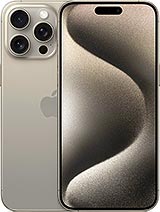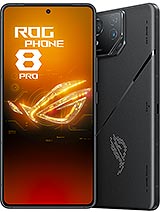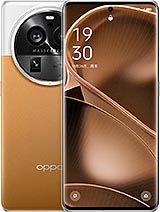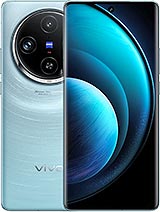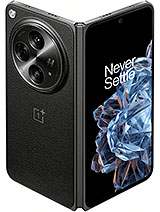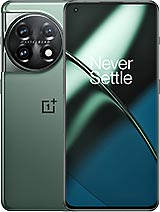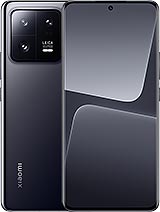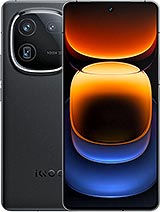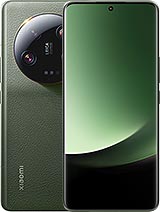OnePlus 12 review

Top-class OLED display
The OnePlus 12 is equipped with a 6.82-inch OLED display with a resolution of 1,440x3,168px. Its aspect ratio is 19.8:9 (2.2:1) and pixel density works out to 510ppi. The LTPO panel features dynamically adaptive refresh rate in the 1-120Hz range, and uses 2160Hz pulse-width modulation (PWM) for dimming. Dolby Vision is on the list of supported HDR standards too.

OnePlus says the display should be good for up to 4,500nits in HDR use cases or 1,600nits in high brightness mode (full screen, in bright outdoor conditions). We can't test for the first number, and when it comes to the second, our testing conditions are also slightly different in principle - we test for a patch of white covering 75% of the screen area. There's a further nuance here in that HBM reaches different brightness levels depending on the color mode, as it turned out.
In the default Natural color setting, the OnePlus 12 was good for 1155nits when placed under bright light - not half bad and perfectly enough, but far from the best in the business. The fact that the OnePlus Open's result is in the same ballpark hints that OnePlus is deliberately targeting a number in that vicinity. Switching to Vivid mode yielded an extra hundred nits, for a 1,253nits result.
When adjusting brightness manually, we measured 794nits in Natural mode and 845nits in Vivid mode - both excellent results. On the opposite end of the slider, minimum brightness was 1.9nits - also a great showing.
We fooled around with different test patch sizes and for 20% coverage, for example, we got just under 1,200nits in Natural mode and a little over 1,500nits in Vivid mode.
Refresh rate
The OnePlus 12 has three refresh rate modes - Auto, Standard, and High. We were a little surprised to see that the chosen mode made no difference to the phone's behavior, at least as reported by Android's refresh rate overlay or our in-house fps counter.
Weirdly enough, even when set to 'Standard', whose description explicitly states that 60Hz will be the maximum, the OnePlus 12 still spikes all the way to 120Hz when you poke a finger at its display - the same thing it does in the other two modes.

In all modes, when idling, the display will switch down to 1Hz if it's at a high enough brightness level, and 10Hz and 30Hz modes are also used as brightness goes progressively lower. If it's too dim, it will maintain 120Hz regardless of touch input or lack thereof. The point being, it will conserve battery whichever way it sees fit, giving you little control over the process - possibly for the better.
I most use cases, when displaying static content, the phone will exhibit that downswitching behavior. However, if you have moving content, say an ad in a browser for example, 60Hz or 30Hz will be maintained, depending on what the content is - a dumb low-fps ad, for one, kept us at 30Hz with no touch input.
The OnePlus 12 does support high frame rate gaming and will maintain 120Hz for titles that can benefit from it, while also pumping out the frames. There's a second 'weirdly enough' here, though - it wouldn't allow GFXBench the luxury of high refresh/frame rate, limiting onscreen results to 60fps.
Streaming and HDR
The OnePlus 12 supports all sorts of HDR video standards, including HDR10+ and Dolby Vision. We got HDR streams from YouTube, and we're happy to report that the brightness in displaying HDR content is now decoupled from the phone's global brightness setting, so you'll be enjoying all the extra impact of such videos without having to fiddle with the slider.

The implementation is such that when you're scrolling the app, the screen will only be in HDR 'mode' for the video itself with the rest of the UI remaining at lower brightness. It will also do so when you minimize the video to the bottom of the YouTube app, but not if the video is in PiP mode, for some reason. Obviously, if you switch to full screen, the entire screen will get the brightness boost.
The OnePlus 12 wouldn't show any HDR capability in Netflix, but since we've been testing the phone before its official global release, we'll blame it on that and check back at a later date. We expect this to be resolved sooner rather than later.
The OnePlus 12 also supports HDR in photos in the gallery - Android 14's Ultra HDR functionality goes by ProXDR on ColorOS.
OnePlus 12 battery life
Our new Active Use Score is an estimate of how long the battery will last if you use the device with a mix of all four test activities. You can adjust the calculation based on your usage pattern using the sliders below. You can read about our current battery life testing procedure here. For a comprehensive list of all tested devices so far, head this way.
The OnePlus 12 packs a 5,400mAh battery, marking an always welcome increase in capacity from the OnePlus 11's 5,000mAh number. The 5,400mAh figure rings a bell too - both the vivo X100 Pro and the Realme GT5 Pro have the same capacity, though the also related Find X7 Ultra sticks to 5,000mAh. The just announced Galaxies are also at 5,000mAh or under.
The OnePlus 12 does quite alright in our test, showing a very efficient combination of chipset, display, and software optimization that leads to an overall Active Use Score of 14:11h.
Least impressive is the result in gaming, though it's not uncommon for high-end phone to score in this ballpark. The web browsing result and the video playback longevity, on the other hand, are towards the top of our charts, while the voice call result isn't half-bad either.
Charging speed
The OnePlus 12's specs say it supports SuperVOOC charging at up to 100W and it ships with a 100W adapter. That's when using a 220V outlet, however, and the same adapter maxes out at 80W when using a 110V power source, hence the OP12 is rated for 80W charging in the US.
This has also been the case in the past, where different power caps existed on US versions, like the 80W capability on the OP11 (100W for the rest of the world), or the 65W on the OP10P when the global one could do 80W.
For what it's worth, our review unit peaked at 78W for the first 5% or so when starting a charge from flat, subsequently dropping to lower values as it went along. In our case, it was plugged into a 220V socket, of course. Normally, we wouldn't get a 78W reading for an 80W rated phone, so we'd say it all checks out.

Either way, in our testing, the OnePlus 12 took 24 minutes to reach 100% when starting from empty, which is pretty awesome. You do need to enable the 'Smart rapid charging' toggle in the battery settings to get the fastest results - otherwise the phone will charge a little slower (we clocked 28 minutes - still pretty impressive).
The OnePlus 12 supports wireless charging too, and OnePlus' specs list a 50W AirVOOC capability with a 1-100% time of 55 minutes. We didn't have the opportunity to test that, but judging by the company's claims for wired charging speed and our results in that discipline, we have no reason to doubt their numbers.
Speaker test
The OnePlus 12 has a dual speaker setup, as usual. There's one speaker that outputs through a couple of openings on the bottom, and another one that fires forward through an earpiece slit and up through another small hole. In vertical orientation, the top one is assigned the left channel, while in landscape the phone will respect the orientation and switch channels to match. Either way, each speaker will also be outputting the opposite channel's track at a lower volume.
In our seven-track speaker test, the 12 posted a 'Good' rating for loudness, its numerical result falling just a little short of the 'Very Good' category where we'd have expected to see the phone.
The 12's sound quality is better than what the loudness label says - we'd call it 'very good', at least. It's a bit boomier in the low-end than the 11 without the old model's slightly too loud treble response, while vocals are equally nice. The OnePlus sounds better to our ears than any of the recent Oppo/vivo/Realme models. The Pixel 8 Pro might have an edge though.
Use the Playback controls to listen to the phone sample recordings (best use headphones). We measure the average loudness of the speakers in LUFS. A lower absolute value means a louder sound. A look at the frequency response chart will tell you how far off the ideal "0db" flat line is the reproduction of the bass, treble, and mid frequencies. You can add more phones to compare how they differ. The scores and ratings are not comparable with our older loudspeaker test. Learn more about how we test here.
Reader comments
- Ameer
- 04 Mar 2025
- uu2
Benchmarks have been updated on 16th dec 2024 but does this apply to the stress test? did the stability score change?
- Hopping Kingfisher
- 06 Jan 2025
- 7Wj
Same as Samsung green line issues
- Malik
- 30 Dec 2024
- UUK
Green line issues

